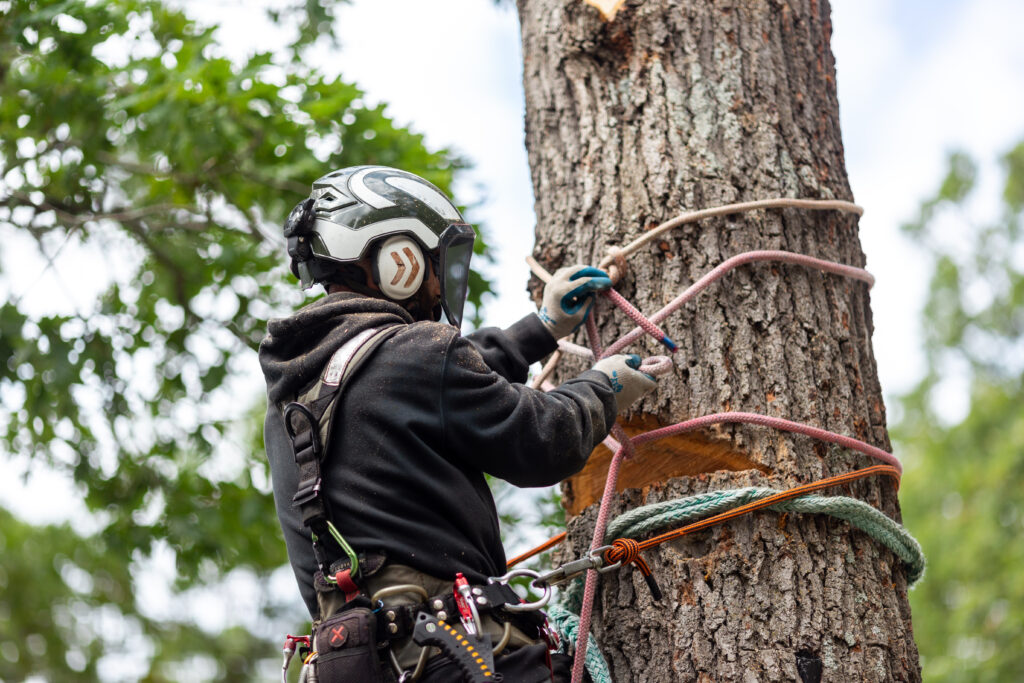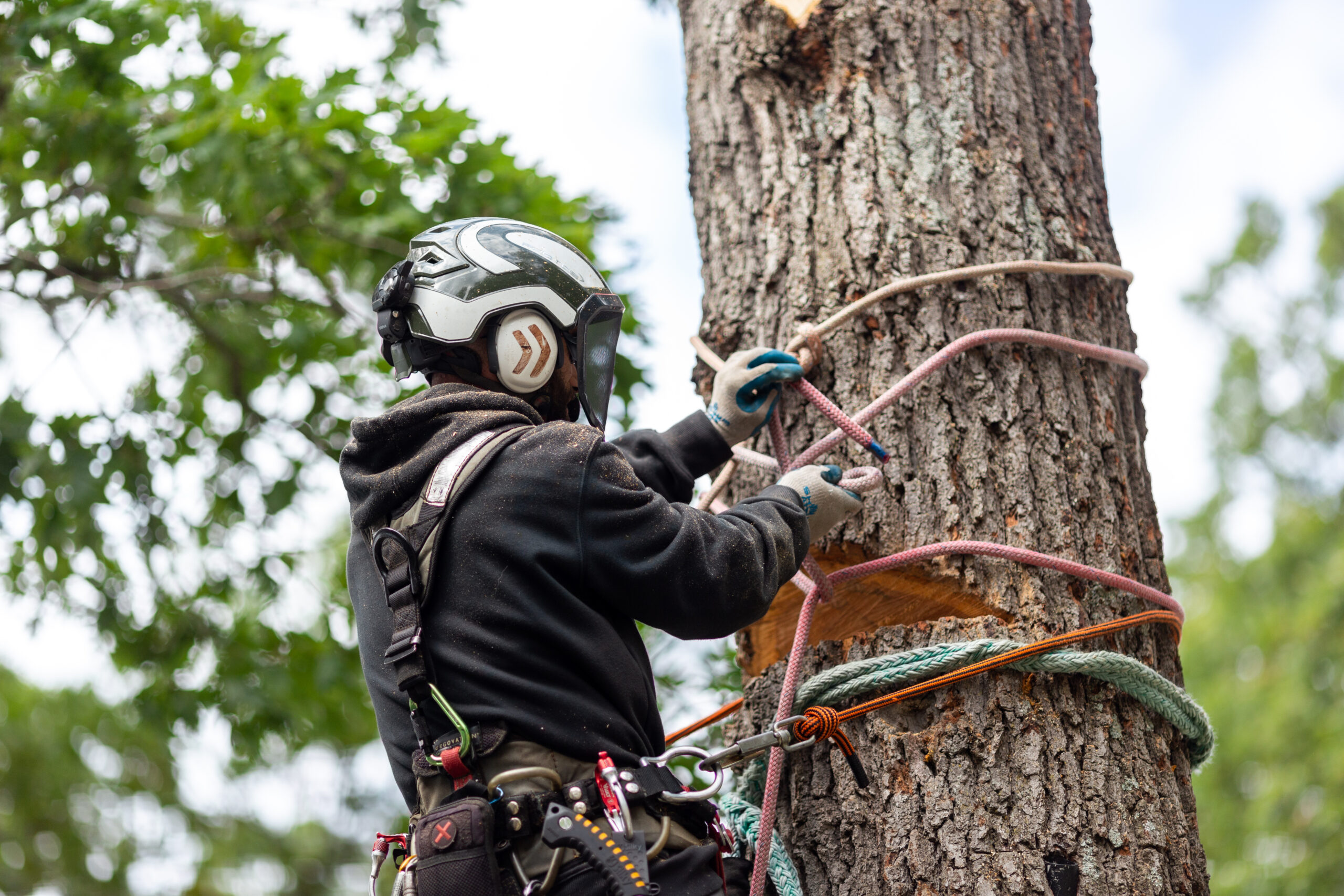
Bowline Knot
The bowline knot is a highly valued essential knots for tree care amongst tree climbers due to its impressive strength and reliability. This knot, characterized by its fixed loop at the end of a rope, is well-regarded for its resistance to slipping or tightening under load. This quality makes the bowline knot an ideal choice for tasks that involve securing the rope around a tree or creating a sturdy loop at the end of a line to serve as attachment points for various equipment.
Running Bowline
Next up is the running bowline, an ingenious variation of the traditional bowline knot. A running bowline is essentially a noose, and its functionality lies in its ability to tighten as more weight is applied. This unique quality makes it an excellent knot for securing heavy branches or logs during removal operations, ensuring that heavy loads can be safely lowered to the ground.
Figure Eight Knot
Often seen in the realms of rock climbing and mountaineering, the figure eight knot also finds its utility in tree care. Known for its distinctive ‘8’ shape, this knot is simple to tie, yet offers a high degree of strength. It is frequently used to create a stopper at the end of a rope to prevent it from slipping through equipment. The simplicity of the figure eight knot also allows for easy visual inspections, an important aspect in maintaining safety during climbs.
Double Fisherman’s Knot
The double fisherman’s knot is a reliable knot for joining two ends of a rope together securely. Whether you need to create a closed loop of rope or cord, or you’re looking to extend the length of your climbing rope, the double fisherman’s knot serves these purposes effectively, ensuring a strong, reliable connection that won’t slip under load.
Prusik Knot
The Prusik knot, named after its inventor, Dr. Karl Prusik, is widely used in climbing scenarios for ascending ropes or creating a self-belay. This knot has the unique ability to slide along a rope when not under tension, but it grips tightly when weight is applied. This characteristic makes the Prusik knot an invaluable tool in the arsenal of any tree care professional.
Alpine Butterfly Knot
The alpine butterfly knot is the go-to knot for situations that require forming a secure loop in the middle of a rope without accessing the ends. This versatile knot is especially useful when you need to isolate a worn or damaged section of rope. Besides, it creates secure attachment points in the middle of a rope, expanding its practical applications in a variety of tree climbing and rigging scenarios.
Clove Hitch
For a quick and easy-to-tie knot, look no further than the clove hitch. This knot is a workhorse in the tree care industry, often used for temporary work like attaching a rope to a carabiner or a tree limb. Although not as strong or secure as some other knots on this list, its simplicity and versatility make it a handy knot to know. Get a knot card here to remember all the knots!
Becoming proficient in these knots will equip tree care professionals with a well-rounded toolkit for safe and efficient tree climbing and rigging operations. Remember, safety should always be the primary concern when working at height. Regular practice of these knots and thorough inspections of all ropes and knots before use is crucial. Master these knots, and you’ll be well on your way to more effective, safer tree care and removal tasks. Check out our page here!
FAQs
Q: What is the safest knot for tree climbing?
A: Safety in tree climbing is dependent not just on the knot but also on how well it’s tied and inspected. That being said, the bowline and figure eight knots are common choices due to their strength and ease of inspection.
Q: How often should I practice these knots?
A: Regular practice is key. The more comfortable you are tying these knots, the better you can perform in pressure-filled or difficult situations.
Q: Do all tree care professionals need to know these knots?
A: Yes, knowing these knots is essential for all tree care professionals involved in climbing. They enhance safety and efficiency during tree care operations.
Q: What other safety measures should I follow when climbing trees?
A: Along with knot mastery, using the proper personal protective equipment (PPE), inspecting your gear regularly, and following industry-standard climbing techniques are crucial.
Q: Can I use any rope for tree climbing?
A: No, only ropes specifically designed for tree climbing should be used. These ropes are engineered to withstand the unique forces encountered in climbing and rigging operations.



